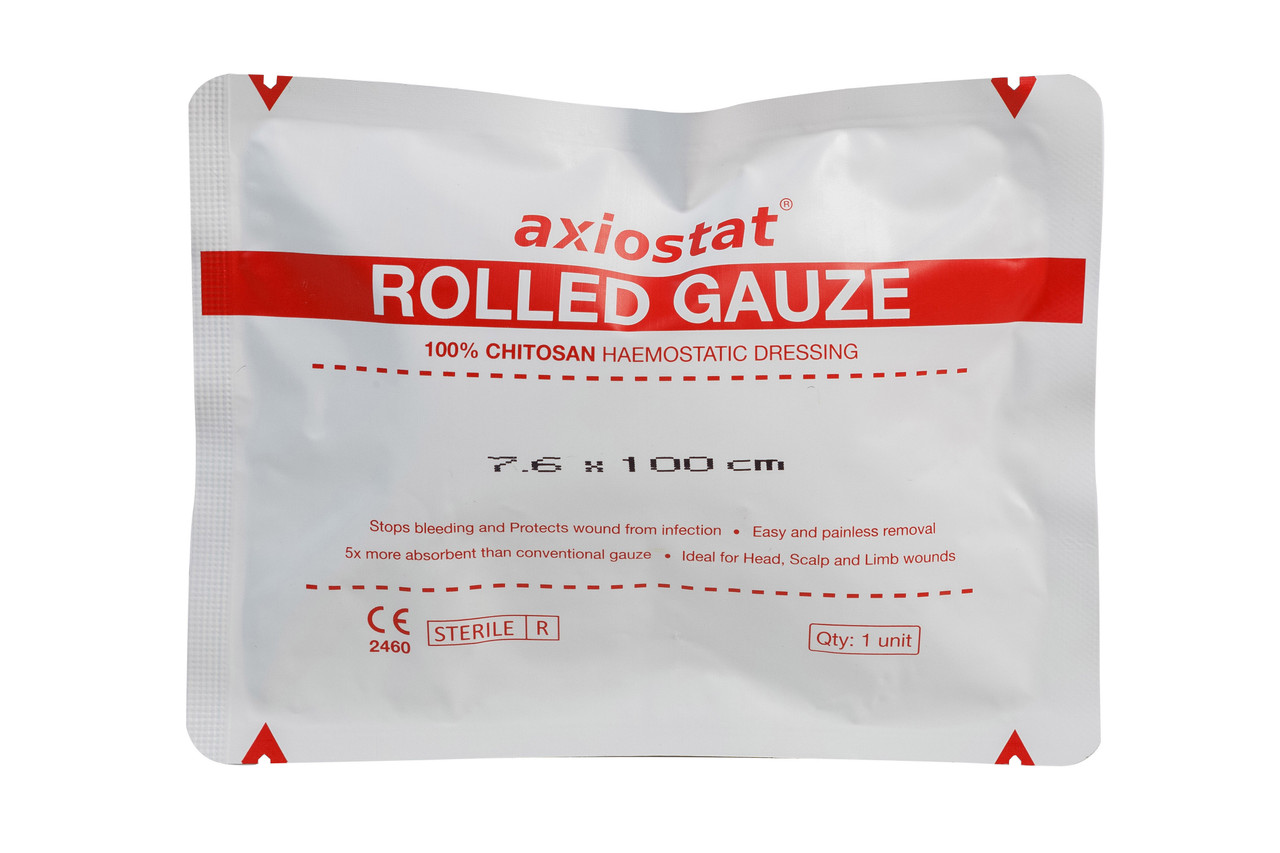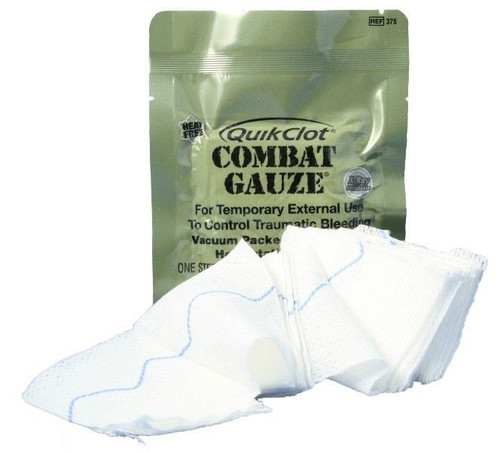Axiostat® Chitosan Hemostatic Rolled Gauze Dressing 7.6x100cm
- Weight:
- 18.00 Grams
- Shipping:
- Eligible for free shipping!
This product is not available for sale in the USA.
- Rolled gauze 7.6 x 100cm
- Sterile, Ready to use
- 80% less chance of rebleeding
- Biocompatible
- Ease of Application and Painless Removal
- Can be cut, folded and stuffed into wound sites
- Active on all sides
- Hypoallergenic, No known side effects
- 100% chitosan
Axiostat rolled gauze is a sterile, 100% Chitosan hemostatic gauze used to control bleeding. Axiostat Rolled Gauze conforms to the wound and can serve as a primary or secondary dressing. Axiostat Rolled Gauze stops bleeding and protects wounds from Infection.
Axiostat prevents loss of blood by providing an active mechanical barrier to the bleeding site.
Axiostat is a sterile. non-absorbable hemostatic dressing intended to be used to control bleeding within minutes of application by providing an active mechanical barrier to the bleeding site.
Axiostat ® accelerates blood clotting and reduces loss of blood because of wounds resulting from gunshots, punctures & stab wounds, scalp & limb cuts, lacerations, and avulsions. It is the best hemostatic dressing and is an indispensable part of the military first aid kit.
The Axiostat for military ss extensively used by defense forces across the globe in order to control bleeding and reduce blood loss resulting from gunshot wounds and blast injuries. It is also recommended for patients with blood disorders or on blood thinners. The Axiostat is presented in a camouflaged, rugged metal package. is easy to carry and can withstand extreme temperatures.
Intended Use
Gunshot wounds
Scalp and Limb Cuts
Blast injuries
Puncture and Stab wounds
Chitosan - the most promising biomaterial of 21st century
Chitosan is considered as one of the most promising biomaterial of 21st century on accounts of its versatile nature, excellent biodegradability, biocompatibility, antimicrobial activity, non-toxicity, and wide applications. Chitosan is derived from Chitin, a second most abundantly available natural polymer after cellulose.
Chitin is naturally found in the exoskeleton of shellfish such as crabs and shrimps, and in the cell membranes of fungi, yeasts and other microorganisms. It is not soluble in dilute acids, whereas chitosan is soluble in dilute acids.
Chitosan is primarily composed of glucosamine and N-acetyl glucosamine residues with a 1, 4-β-linkage. The presence of primary amines (-NH2) in chitosan gives it a net positive charge and are important for its biological properties
Process Innovation
The production chitosan starts with the selection of suitable source for chitin extraction. Chitin can be extracted from either the animal sources such as shellfish or the non-animal sources such as fungi. The physicochemical properties of chitosan can vary greatly depending on its source.
Chitin is extracted from the natural sources via demineralization and deproteinization. The purified Chitin is then treated with concentrated alkalis (e.g. sodium hydroxide) to obtain Chitosan.
The process is known as deacetylation and it affects the final properties of Chitosan such as extent of positive charge (proportion of amine groups in polymer) and molecular weight.
Specifications:
Composition Chitosan – 100%
Indication Stops severe bleeding
Mechanism Mucoadhesion due to charge
Material Positively charged, reacts actively
Type Sponge, natural polymer
Flexibility Very flexible, both sides active
Sterility Sterilized using Gamma irradiation
Use Single use
Removal Irrigate with saline
Side Effects None
Implant No




















